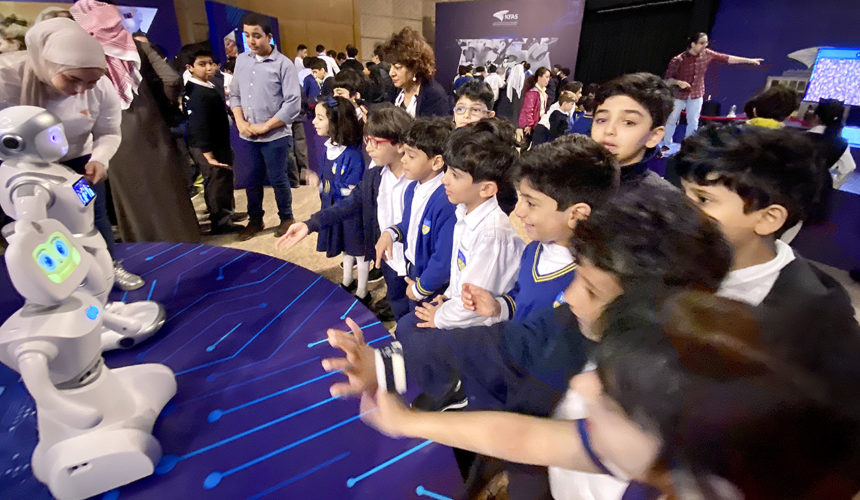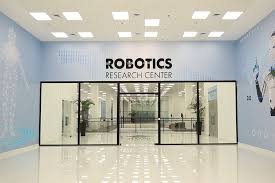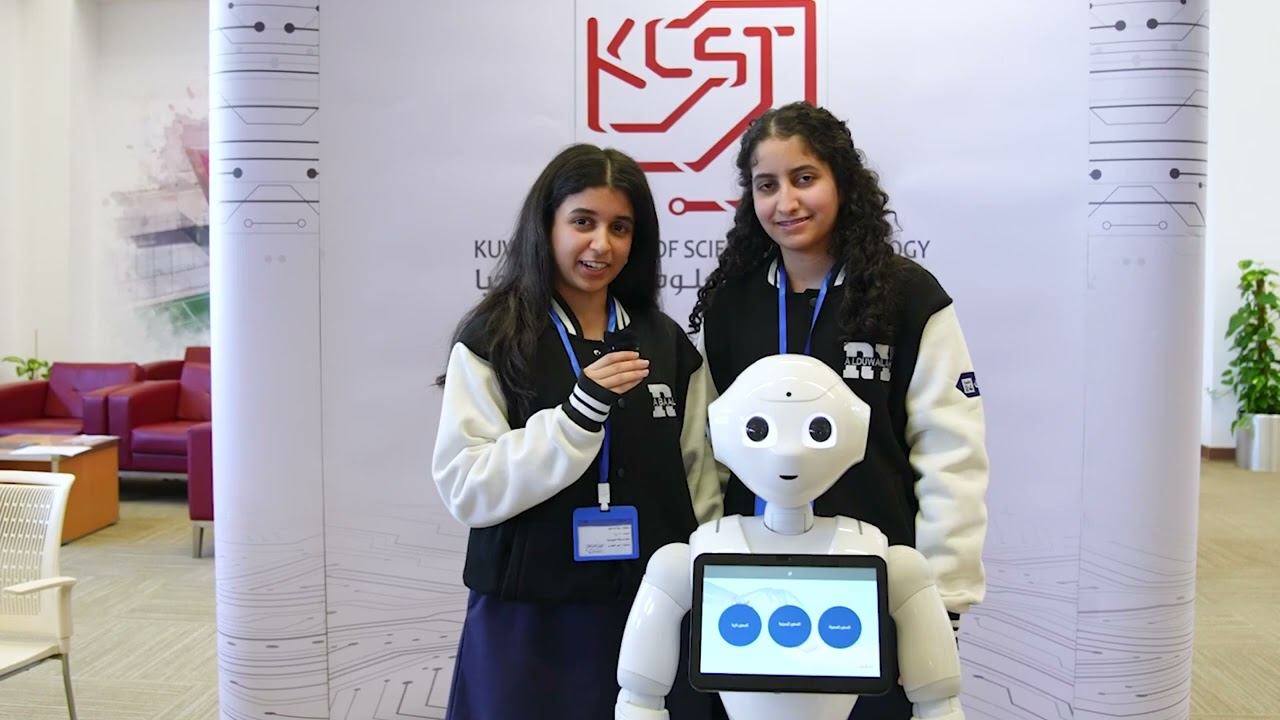In recent years, Kuwait has embraced technology as a driver of transformation across multiple fields, and education has been at the center of this movement. Among the most significant advancements is the integration of robotics into classrooms and research labs. Robotics is no longer just a futuristic concept seen in science fiction; it has become a practical tool for learning, exploration, and innovation. For Kuwait, this shift has created exciting opportunities for students, educators, and researchers, allowing them to engage with real-world applications of science and technology while preparing for a competitive global future.
The adoption of robotics in education is not only about machines and coding; it is about empowering human potential. It allows young minds to move from theoretical learning to practical experimentation, which develops problem-solving, critical thinking, and creativity. At the same time, Kuwait’s research institutions are leveraging robotics to advance scientific exploration and develop homegrown innovations. The journey is still unfolding, but its impact is already visible in classrooms, universities, and laboratories.
Robotics as a Tool for Modern Learning
Traditional education often focuses heavily on memorization and theory. While these remain important, modern challenges demand more interactive and skill-based learning. Robotics has emerged as a natural solution to bridge this gap. By working with robots, students in Kuwait gain hands-on experience in programming, engineering, electronics, and design.
Children in schools are introduced to simple robots that respond to commands or follow basic instructions. These activities may seem small, but they spark curiosity and confidence. At higher education levels, robotics projects become more complex, requiring teams to collaborate on coding, sensor integration, and machine learning applications. This journey fosters teamwork, leadership, and resilience—qualities that traditional classroom methods often struggle to nurture.
Inspiring Curiosity from an Early Age
One of the most powerful aspects of introducing robotics into education is its ability to inspire curiosity. A child who builds a robot to navigate a maze experiences science and mathematics in action, rather than as abstract subjects. Suddenly, math formulas become tools for programming movements, and physics concepts explain how wheels turn or sensors detect obstacles.
In Kuwait, this approach has created new excitement among students, motivating them to learn more deeply. Robotics competitions, workshops, and after-school clubs further encourage this curiosity, giving students a platform to test their skills, share ideas, and even dream of becoming inventors. By nurturing creativity at an early stage, Kuwait is helping young learners discover their passions in technology-driven fields.

Robotics in Universities and Higher Education
At the university level, robotics has taken on a more advanced role. Kuwaiti universities are increasingly offering courses and labs dedicated to robotics, artificial intelligence, and automation. These programs do more than teach technical skills; they prepare students for global industries where robotics is becoming essential.
University research labs have begun exploring robotics in areas such as healthcare, industrial automation, and environmental sustainability. For example, robots are being tested for medical assistance, lab automation, and even helping with energy efficiency projects. Students engaged in these labs not only learn engineering and coding but also understand how technology can be applied to real societal challenges. This hands-on exposure gives them a competitive edge when stepping into international job markets or pursuing higher research.
Boosting Research and Innovation
Robotics in Kuwait’s research labs is fueling a culture of innovation. Researchers are using robots to conduct experiments, analyze data, and simulate complex scenarios that would otherwise be time-consuming or unsafe for humans. This allows for faster progress in scientific studies, particularly in fields like engineering, medicine, and environmental sciences.
One of the most exciting aspects is how robotics research is encouraging cross-disciplinary collaboration. For example, engineers, biologists, and computer scientists are working together on projects that combine robotics with healthcare and sustainability. Such collaborations not only solve complex problems but also create a new generation of researchers skilled in teamwork and innovation.
Preparing for Future Careers
The global job market is rapidly changing, with automation and robotics at the center of new opportunities. Kuwait’s decision to integrate robotics into education and research is a forward-looking step to prepare its youth for this shift. Students who are exposed to robotics gain skills in coding, problem-solving, and systems thinking skills that are in high demand across industries such as manufacturing, logistics, healthcare, and defense.
For many young people, working with robotics becomes the first step toward careers in artificial intelligence, computer science, mechanical engineering, or data analytics. It also builds an entrepreneurial mindset, as students often think of creative ways to use robots in solving community problems or building startups. By prioritizing robotics education, Kuwait is investing in its human capital and ensuring that future generations are not only job seekers but also innovators and leaders.
Bridging Global Knowledge and Local Talent
Another significant impact of robotics in Kuwait is its role in connecting local talent with global knowledge. Through international competitions, academic collaborations, and research partnerships, Kuwaiti students and researchers are gaining exposure to cutting-edge advancements. This global connection is crucial for ensuring that Kuwait remains competitive in the international arena.
At the same time, robotics offers opportunities to adapt global ideas to local needs. For example, robots can be designed to address challenges unique to Kuwait’s climate, infrastructure, or industries. By doing so, students and researchers develop solutions that are both globally relevant and locally impactful. This balance of global learning and local application creates a powerful ecosystem for progress.
Overcoming Challenges in Adoption
While the integration of robotics in Kuwait’s education and research has shown immense promise, the journey is not without challenges. Some schools may struggle with limited resources or trained staff to introduce robotics effectively. Additionally, the fast pace of technological change means that constant updates and training are necessary to keep programs relevant.
However, these challenges are being addressed through government initiatives, partnerships with technology companies, and teacher training programs. The enthusiasm among students has also encouraged schools and universities to invest more in robotics infrastructure. With consistent effort, these hurdles are gradually being overcome, paving the way for wider adoption.
Encouraging Creativity and Critical Thinking
Beyond technical skills, robotics plays a unique role in shaping the mindset of students. Building and programming robots requires persistence, creativity, and problem-solving. Students learn that failure is part of the process, as robots may not work perfectly the first time. This experience teaches resilience and encourages a growth mindset.
Moreover, robotics encourages students to think critically about technology’s role in society. They begin to ask questions: How can robots make life better? What ethical issues arise when using automation? How do we balance human creativity with machine efficiency? Such questions shape well-rounded individuals who are not only skilled in technology but also thoughtful about its impact.

The Role of Teachers and Mentors
Teachers and mentors are central to the success of robotics education. In Kuwait, educators are increasingly taking on the role of facilitators, guiding students in their exploration rather than simply delivering information. This shift has created a more engaging classroom atmosphere, where learning is driven by curiosity and discovery.
Mentorship in research labs is equally important. Senior researchers provide guidance, share expertise, and encourage young researchers to push boundaries. This nurturing environment builds confidence and ensures that students feel supported in their academic and creative journeys.
Robotics as a Bridge to Future Technologies
Robotics is not a standalone field; it connects with emerging technologies such as artificial intelligence, machine learning, and the Internet of Things (IoT). By working with robots, Kuwaiti students and researchers are naturally introduced to these interconnected domains. This exposure ensures that they are prepared for the next wave of technological advancements.
In education, students begin with simple programming, then progress toward integrating sensors, AI, and data analysis. In research labs, robotics projects often evolve into larger explorations involving smart systems, automation, and digital transformation. These experiences make Kuwait’s education system more dynamic and future-ready.
Building a Culture of Innovation
The presence of robotics in schools and research labs is shaping a broader culture of innovation in Kuwait. Students are encouraged to think beyond traditional career paths, envisioning futures as inventors, entrepreneurs, and changemakers. Research labs, meanwhile, provide platforms for experiments that could eventually turn into groundbreaking solutions for industries and society.
This culture of innovation does more than prepare individuals for jobs it strengthens the entire nation’s ability to adapt, grow, and compete in an increasingly technology-driven world. By investing in robotics, Kuwait is nurturing a mindset that values creativity, exploration, and lifelong learning.
Future Outlook
The journey of robotics in Kuwait’s education and research labs is only beginning. With government support, private sector collaboration, and growing enthusiasm among students, the future looks promising. The vision is not just to create skilled workers but to empower a generation of innovators who can contribute to Kuwait’s knowledge economy.
As technology evolves, robotics will continue to expand into new areas of education and research. Schools may introduce more advanced robotics programs at earlier stages, while research labs may explore breakthroughs in healthcare, renewable energy, and smart cities. Kuwait’s progress in this field has the potential to inspire other nations in the region and beyond.
Conclusion
Robotics in Kuwait’s education and research labs represents more than a technological upgrade it is a transformation in how knowledge is shared, skills are developed, and futures are imagined. By integrating robotics into learning environments, Kuwait is providing its youth with the tools to dream bigger, think smarter, and innovate boldly.
This shift is creating confident students, skilled researchers, and a culture of creativity that will define Kuwait’s role in the global future. The investment in this is not just about machines; it is about unlocking human potential and shaping a brighter tomorrow for the nation.
Also Read – Cloud Computing Driving Remarkable Growth for Kuwait’s SMEs



